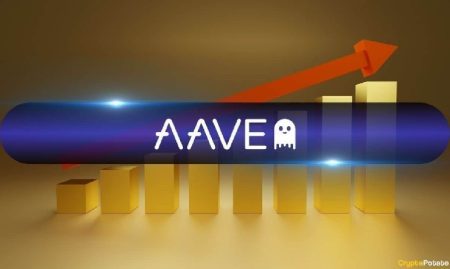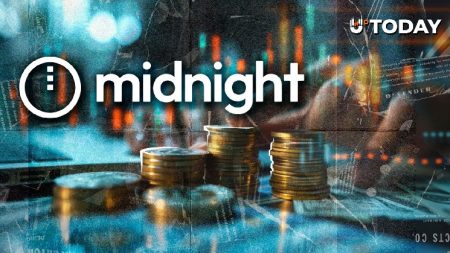Shifting Tides: Hyperliquid’s Dominance in On-Chain Perpetuals Market Faces New Challengers
The Changing Landscape of Decentralized Perpetual Futures Trading
In a dramatic shift within the cryptocurrency derivatives ecosystem, Hyperliquid—once the undisputed titan of on-chain perpetual futures—is witnessing its market dominance rapidly erode as innovative competitors gain substantial traction. According to data compiled by pseudonymous Dune Analytics researcher @uwusanauwu, Hyperliquid’s commanding 71% market share recorded in May has contracted significantly to just 38% in recent weeks, signaling a major realignment in this rapidly evolving sector.
This market transformation comes as venture-backed challengers like Lighter and Aster have emerged from relative obscurity to claim substantial portions of the trading volume. Lighter, which secured backing from prestigious venture capital firm Andreessen Horowitz (a16z), has expanded its footprint to capture 16.8% of the market. Similarly, Binance Labs-supported Aster has carved out an impressive 14.9% share, with both platforms experiencing remarkable growth trajectories from their single-digit positions earlier this year. These figures, calculated based on weekly trading volumes with wash trading excluded, represent genuine user engagement rather than artificial activity.
“What we’re witnessing is the natural evolution of a maturing market,” explains blockchain economist Dr. Elena Markova, who spoke with our publication. “Early movers like Hyperliquid established the proof of concept, but as the technology gains validation, we inevitably see sophisticated new entrants refining the model and capturing market share through innovation and competitive offerings.”
Understanding On-Chain Perpetuals: The Future of Decentralized Derivatives
The surging interest in on-chain perpetual futures represents a significant milestone in decentralized finance’s journey toward offering sophisticated financial instruments that rival traditional markets. Unlike conventional futures contracts that expire on predetermined dates, perpetual futures—or “perps” as they’re commonly known in trading circles—allow investors to maintain positions indefinitely, creating unique opportunities for both short and long-term strategic trading.
What distinguishes on-chain perpetuals from their centralized counterparts is their fundamental architecture. These derivative contracts exist directly on blockchain networks, ensuring complete transparency in execution and settlement. Every trade, liquidation, and position adjustment is permanently recorded on an immutable public ledger, eliminating the opacity that has plagued traditional derivatives markets. This transparency extends to the funding rate mechanism—a critical component that periodically transfers value between long and short position holders to maintain the contract’s price alignment with the underlying asset’s spot value.
The growing appeal of on-chain perpetuals stems from their ability to combine the best elements of decentralized finance—self-custody, permissionless access, and censorship resistance—with the sophisticated trading instruments previously available only in centralized environments. For traders concerned about counterparty risk following several high-profile centralized exchange collapses, these protocols offer a compelling alternative that doesn’t require trusting a third-party custodian with funds.
Explosive Growth and Intensifying Competition in the Perpetuals Market
The on-chain perpetuals sector has demonstrated remarkable expansion, with combined trading volumes across all platforms approaching a staggering $700 billion over the past four weeks alone. In just the last 24 hours, these protocols facilitated approximately $42 billion in trading activity, underscoring the massive appetite for decentralized derivatives trading. This surge in transaction volume reflects both growing institutional interest and increased participation from retail traders seeking exposure to cryptocurrency price movements without directly holding the underlying assets.
Perhaps more telling than the volume figures is the explosive proliferation of platforms entering the space. From a mere two protocols operating in 2022, the ecosystem has ballooned to encompass more than 80 distinct platforms today. This extraordinary growth trajectory perfectly illustrates market capitalism’s fundamental dynamics: successful business models invariably attract waves of new competitors, leading to market fragmentation, enhanced innovation, and ultimately, more favorable conditions for end users.
“The relatively low barriers to entry in decentralized finance create perfect conditions for this kind of competitive pressure,” notes financial technology researcher Morgan Chen. “Unlike traditional finance, where regulatory hurdles and capital requirements limit new entrants, blockchain allows talented developers to launch competitive products with relatively modest resources, provided they have the technical expertise and vision to execute.”
Strategic Maneuvers: The Emerging Rivalry Between Market Players
The increasingly competitive landscape has spawned fascinating strategic positioning among key players, most notably between former market leader Hyperliquid and aggressive challenger Aster. In what industry observers characterize as a calculated competitive move, Hyperliquid recently listed Aster’s native token (ASTR) on its platform, enabling traders to take both long and short positions with 3x leverage. This move, while offering new trading opportunities, also potentially exposes Aster’s token to increased price volatility.
Aster’s response demonstrated both competitive spirit and strategic acumen. Just days after Hyperliquid’s listing decision, Aster countered by offering perpetual futures contracts for Hyperliquid’s native HYPE token—but with a significantly more aggressive 300x leverage option. This extraordinary leverage multiple potentially creates substantial risk of volatility and liquidations for traders taking positions on HYPE, while simultaneously signaling Aster’s technological confidence and willingness to engage in competitive brinkmanship.
“What we’re seeing is more than just business competition—it’s a battle for philosophical and technical supremacy in how decentralized derivatives should function,” explains DeFi strategist and researcher Alexandra Winters. “Each platform is making distinctive choices about oracle implementation, liquidation mechanisms, and risk parameters. These technical decisions reflect fundamentally different visions about the optimal balance between capital efficiency, system security, and user experience.”
The Future Outlook: Innovation, Consolidation, and Regulatory Considerations
As the on-chain perpetuals market continues its rapid evolution, industry experts anticipate several key developments that will shape its trajectory. First, technological innovation will likely accelerate, with platforms competing to offer enhanced features such as cross-margining, advanced order types, and improved oracle solutions to reduce the risk of price manipulation. Second, market consolidation appears inevitable, with smaller players either being acquired or failing to maintain sufficient liquidity to remain competitive.
Perhaps most significantly, regulatory attention will almost certainly intensify as the sector’s trading volumes approach levels that cannot be ignored by financial authorities. The current regulatory uncertainty surrounding decentralized derivatives presents both opportunities and challenges for market participants. While regulation might impose new compliance requirements, it could also provide the clarity needed for broader institutional adoption.
“The platforms that successfully navigate the coming regulatory landscape while continuing to innovate will likely emerge as the long-term winners,” predicts former commodities regulator and cryptocurrency legal expert Jonathan Harrington. “We’re witnessing the birth of an entirely new financial infrastructure that could fundamentally reshape how derivatives markets function globally. The question isn’t whether these protocols will impact traditional finance, but rather how quickly and comprehensively they’ll do so.”
As Hyperliquid works to defend its market position against rising competitors like Lighter and Aster, traders and investors stand to benefit from improved features, reduced fees, and innovative offerings. The battle for supremacy in on-chain perpetuals represents not just commercial competition, but a critical chapter in decentralized finance’s broader challenge to traditional financial systems. Whether established players can maintain their positions or new entrants will continue gaining ground remains one of the most compelling narratives in today’s rapidly evolving cryptocurrency landscape.














